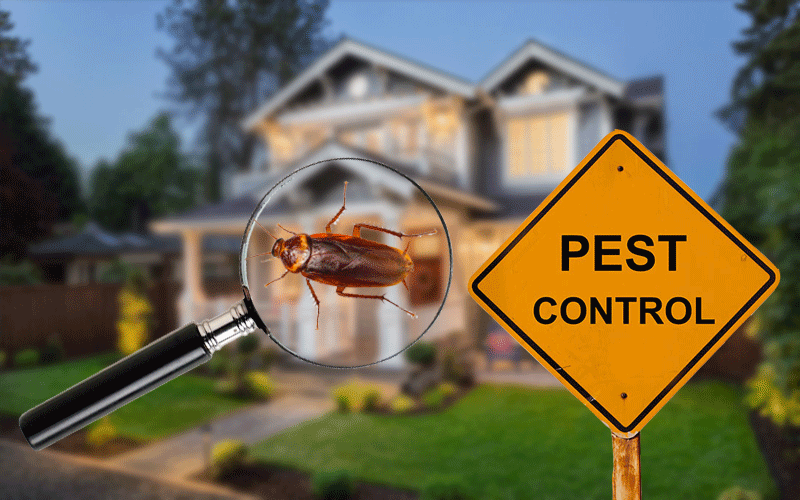Reliable A1 Bed Bug Treatment in Charlotte - Safe and Proven Approaches
Reliable A1 Bed Bug Treatment in Charlotte - Safe and Proven Approaches
Blog Article
Bed Insect Therapy Break Down: Contrasting Chemical Vs. Non-Chemical Solutions
In the realm of bug control, specifically when handling the consistent problem of bed bugs, the option in between chemical and non-chemical treatment options can be an essential one. Both strategies offer distinct advantages and disadvantages, affecting factors such as efficiency, safety factors to consider, and total cost. By checking out the nuanced details of each approach, a more clear understanding of which course to pursue in attending to a bed pest infestation can be achieved.
Efficiency of Chemical Therapies
Chemical treatments for bed bug infestations have been widely recognized for their quick and potent efficacy in eradicating these insects. When thinking about the performance of chemical therapies, it is vital to recognize that they can give a comprehensive and quick solution to a bed pest trouble. Professional pest control experts usually count on pesticides to target bed pests at different stages of their life cycle, consisting of nymphs, adults, and eggs. These chemicals typically function by interrupting the bed bugs' nerve system, leading to paralysis and eventual fatality.
Moreover, chemical therapies have the benefit of supplying residual effects, implying that they can continue to get rid of bed bugs even after the first application. This recurring activity is especially valuable in combating any type of prospective re-infestations. Furthermore, the rapid action of chemical therapies can bring alleviation to individuals encountering serious bed pest invasions, enabling them to restore control of their home rapidly.
Safety And Security Interest In Chemical Solutions
One critical facet that needs careful factor to consider when using chemical solutions for bed pest treatment is making sure the safety of residents and the setting. Exposure to certain chemicals used in bed bug therapies can lead to respiratory problems, skin irritation, or other damaging reactions, particularly in individuals with pre-existing problems or level of sensitivities.
Furthermore, the ecological influence of chemical solutions is one more considerable factor to consider. Some chemicals used in bed insect treatments may be unsafe to useful pests, wildlife, and ecological communities if they leach into the dirt or water systems. It is vital to use chemical therapies sensibly, adhering to security standards, and considering much less poisonous options to minimize these dangers and make sure the effective and safe administration of bed insect invasions.
Advantages of Non-Chemical Techniques
Taking into consideration the possible safety concerns and ecological effect linked with chemical options for bed pest therapy, checking out non-chemical methods presents an appealing choice with numerous distinct benefits. Non-chemical treatments are ecologically friendly, as they do not add to air or water pollution, making them a lasting choice for bug control.
Furthermore, non-chemical services can be effective in targeting bed insects, consisting of hard-to-reach locations where chemical therapies might not permeate. Approaches such as warmth therapy, vacuuming, steam cleansing, and mattress encasements offer detailed eradication without making use of dangerous chemicals. Moreover, non-chemical approaches can be much less disruptive, calling for minimal preparation and permitting quicker reentry right into treated locations. Generally, deciding for non-chemical bed bug treatment methods not just prioritizes security and ecological security yet additionally ensures efficient and thorough parasite control.
Limitations of Non-Chemical Treatments

Additionally, non-chemical treatments typically require numerous applications to achieve successful removal. This can be lengthy and may not always ensure full elimination of all bed insects and their eggs, specifically in hidden or hard-to-reach areas.
Furthermore, the success of non-chemical therapies greatly relies upon proper execution my explanation and thoroughness, which can be testing for people without specialist experience. Inadequate application of non-chemical approaches might lead to incomplete elimination, causing consistent invasions and the requirement for extra treatments.
For that reason, while non-chemical treatments have their advantages, it is vital to recognize these constraints and consider them when determining one of the most reliable method for managing bed pest infestations.
Expense Comparison: Chemical Vs. Non-Chemical Options
Given the restrictions linked with non-chemical treatments, a necessary facet to review in the context of bed pest monitoring is the cost comparison between chemical and non-chemical alternatives. In contrast, non-chemical therapies like heat treatment or vapor can be more costly, with expenses varying from $1,000 to $6,000 for a whole home. While the first cost of chemical therapies may appear lower, numerous therapies might be required to totally eliminate the infestation, potentially enhancing the general expense.
Verdict

Considering the prospective security worries and ecological impact connected with chemical solutions for bed bug therapy, discovering non-chemical approaches provides an appealing choice with numerous distinct benefits.Provided the restrictions associated with non-chemical therapies, an important aspect to assess in the context of bed pest administration is the price comparison in between chemical and non-chemical choices. In contrast, non-chemical therapies like warm treatment or heavy steam can be much more pricey, with costs ranging from $1,000 to $6,000 for a whole home. While the preliminary expense of chemical therapies might appear lower, numerous treatments may be needed to fully get rid of the infestation, potentially enhancing the overall expense.In conclusion, when contrasting chemical and non-chemical bed bug therapy alternatives, it is crucial to think about performance, safety and security, advantages, restrictions, additional hints and expense.
Report this page